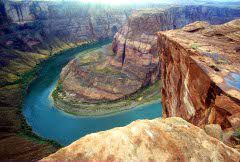Sunyata (Sanskrit) and Sunnata (Pali) translate as “emptiness” in English. It is a basic concept in Buddhism and is stressed, especially in some schools of Mahayana Buddhism, including Zen.
Emptiness teaches the lack of substantiality or independence of things and stresses the idea of no independent origination, that the present state of all things is the result of a previous state. Emptiness includes the teaching of impermanence; everything is always in a state of change. In other words, everything, including every sentient being, is an ever-changing process.
The dharma of non-attachment relates to the concept of emptiness and impermanence since if all things are impermanent and are always changing, what is there to be attached to? Being free of attachments is the true state of emptiness.
The Buddha taught that this is like this, because that is like that . . . and that is like that, because this is like this; this is called dependent co-arising.”
“It is not the river that flows; the flow is the river, and there is no riverbed – the flow is therefore empty.”
“You can’t step into the same river twice. Why? Because you and the river are constantly changing. The river does not stay the same, and neither do you.”
“Where is the baby in your baby picture?
His Holiness the Dalai Lama refers to sunyata as “the knowledge of the ultimate reality of all objects, material and phenomenal.” Sunyata explains that everything is interrelated, interdependent, and is without substance or soul.
Sunyata or emptiness does not mean that there is no existence of matter. It does not mean that feelings, perceptions, or ideas do not exist. The five aggregates that comprise a sentient being, i.e., body, feelings, perceptions, mind formations or thought process, and consciousness, are impermanent, ever-changing, and therefore empty. Forms or material things are compounded, the result of something else, the effect of a cause, and are therefore impermanent and empty.
Each of us is made of stardust, and even the stars are the result of something else. Can you imagine there being a beginning of anything and there being an ending? Name something that was not the result of something else and the cause of something else. How far back can we go in naming our ancestors? The human brain has a difficult time coping with the idea that there either is a beginning and an end or that there is not.
The reason for the Buddhist teaching of emptiness is to loosen all attachments to views, stories, and assumptions, leaving the mind empty of all greed, anger, and delusion; therefore, empty of the suffering of stress, anxiety, frustration, and unsatisfactoriness.

